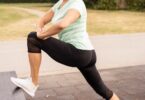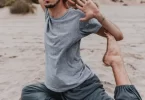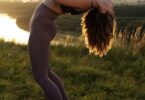Yoga has been practiced for thousands of years and is known for its various health benefits. While yoga can help improve overall physical and mental health, certain poses are particularly effective for targeting specific areas of the body, such as the legs. Yoga for legs can help increase strength, flexibility, and circulation, as well as relieve pain and stiffness. In this article, we’ll explore 15 yoga poses that are excellent for strengthening and stretching the legs.
Benefits of Yoga for Legs
Yoga for legs offers numerous benefits for the body and mind, such as:
- Increased strength: Yoga poses that target the legs, such as the warrior poses, can help build strength in the quadriceps, hamstrings, glutes, and calves.
- Improved flexibility: Many yoga poses require deep stretches that can improve flexibility and range of motion in the legs.
- Better circulation: Certain yoga poses, such as inversions and twists, can improve blood flow to the legs, reducing swelling and inflammation.
- Pain relief: Yoga for legs can help alleviate pain and stiffness in the hips, thighs, knees, and ankles.
- Improved balance and stability: Many yoga poses require balance and stability, which can help improve overall coordination and reduce the risk of falls.
- Reduced stress and anxiety: Yoga is known for its calming effects on the mind, which can help reduce stress and anxiety levels.
Tips for Practicing Yoga for Legs
Before diving into the yoga poses, here are some tips for practicing yoga for legs safely and effectively:
- Warm-up: Always warm up before starting any yoga practice to prevent injury and prepare the body for the poses. A few minutes of gentle stretching or a quick walk can help get your blood flowing and loosen up any tightness in the legs.
- Listen to your body: It’s important to listen to your body and not push beyond your limits. Never force yourself into a pose that causes pain or discomfort. Remember to breathe deeply and evenly throughout your practice.
- Use props: Yoga props such as blocks, blankets, and straps can be helpful for modifying poses and making them more accessible. Don’t be afraid to use props as needed.
- Don’t skip savasana: Savasana, or corpse pose, is the final relaxation pose at the end of a yoga practice. It’s a crucial part of the practice that allows the body to fully relax and absorb the benefits of the practice. Don’t skip this pose!
Yoga Poses for Legs
- Mountain Pose (Tadasana)
Tadasana is a foundational pose that helps improve posture and alignment. To practice this pose, stand with your feet hip-distance apart and press evenly through all four corners of your feet. Engage your thigh muscles and draw your belly button in towards your spine. Keep your shoulders relaxed and gaze forward.
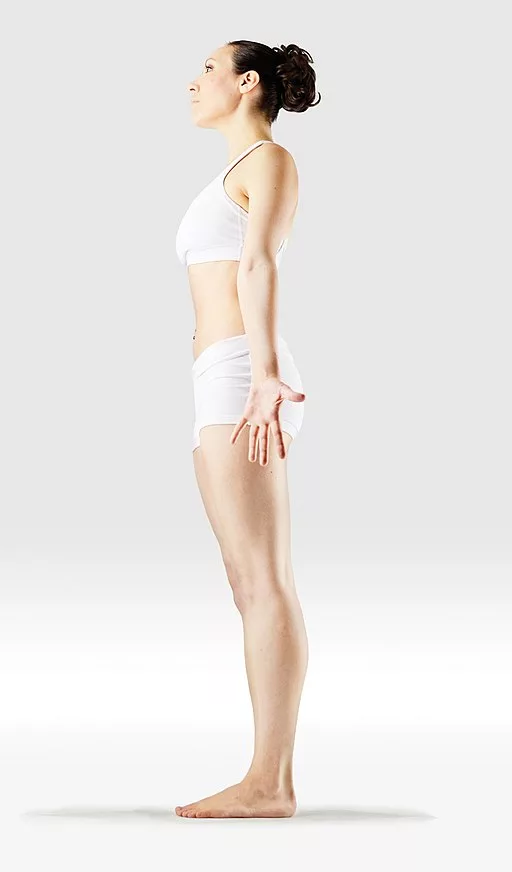
- Tree Pose (Vrksasana)
A tree pose is a balancing pose that strengthens the legs and improves stability. Start in tadasana and bring your right foot to your left inner thigh. Press your foot into your thigh and your thigh into your foot. Place your hands in prayer position at your heart or extend them overhead. Repeat on the other side.
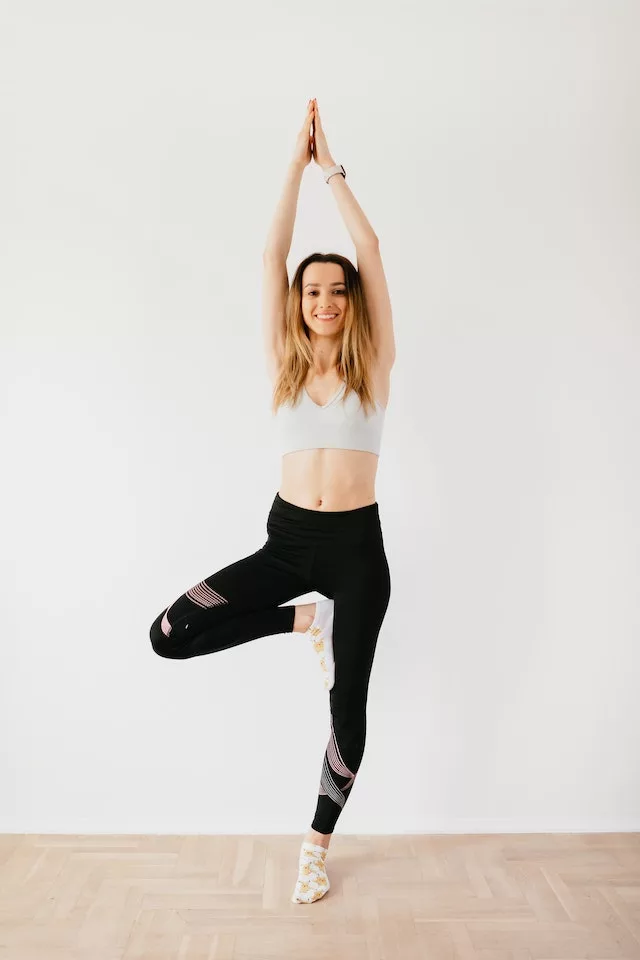
- Warrior I (Virabhadrasana I)
Warrior I is a powerful pose that strengthens the legs and opens the chest. From tadasana, step your left foot back and turn it out 45 degrees. Bend your right knee and square your hips forward. Reach your arms overhead and gaze up toward your hands.
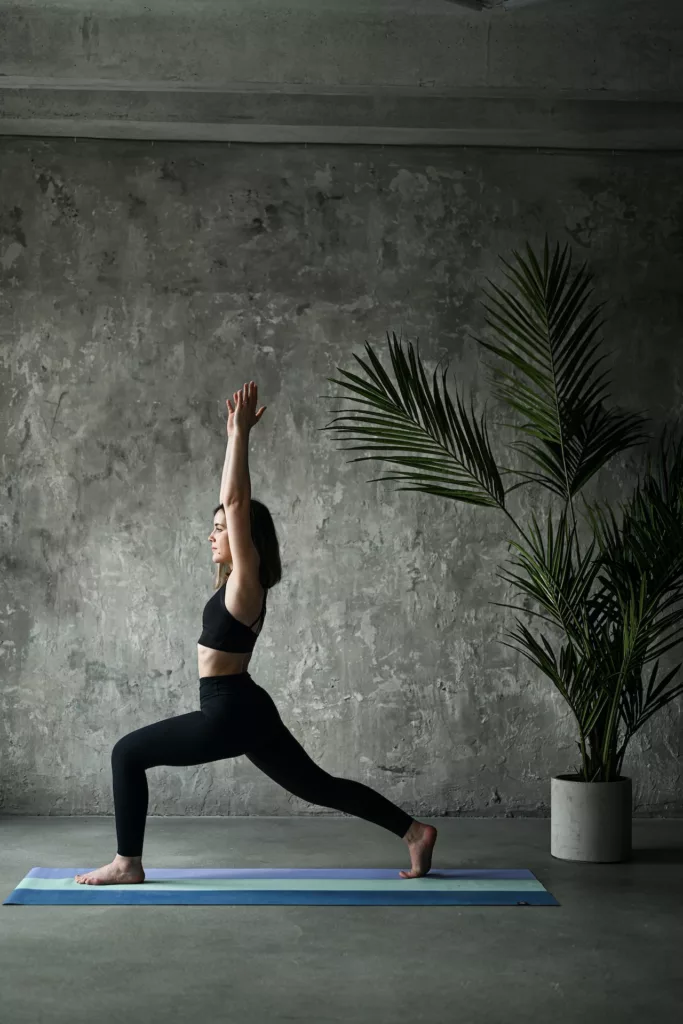
- Warrior II (Virabhadrasana II)
Warrior II is a dynamic pose that strengthens the legs and hips. From warrior I, open your hips and arms out to the sides. Keep your front knee bent and gaze over your front hand.
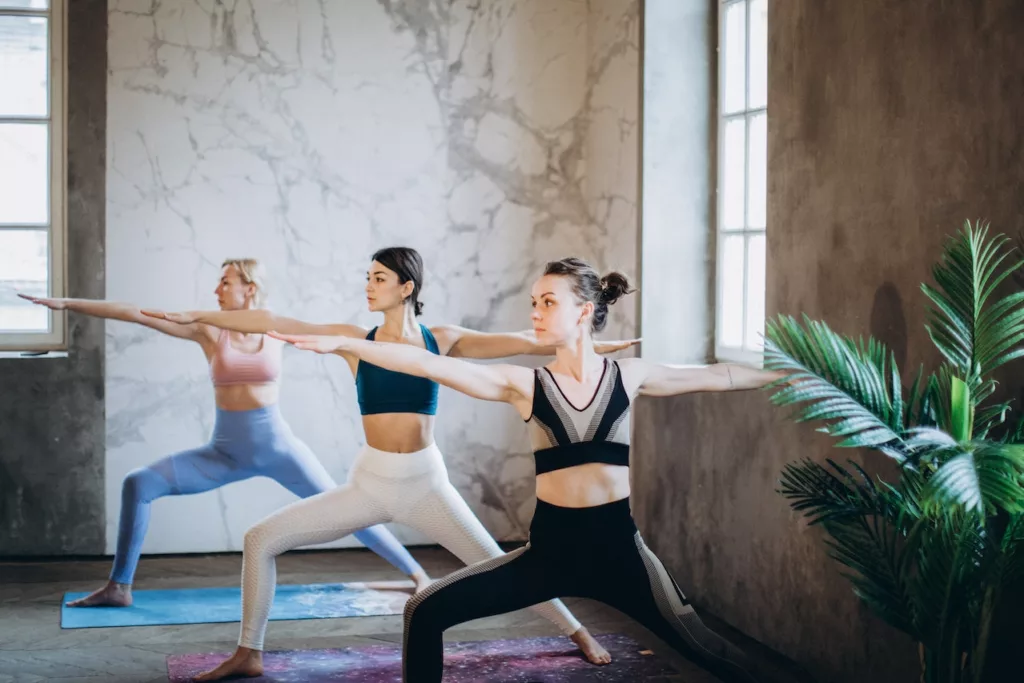
- Warrior III (Virabhadrasana III)
Warrior III is an intense pose that strengthens the legs and core. From warrior II, shift your weight onto your front foot and lift your back leg parallel to the floor. Reach your arms forward and gaze down at the ground.
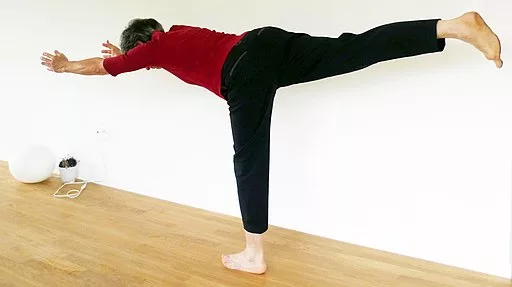
- Extended Triangle Pose (Utthita Trikonasana)
The extended triangle pose is a great pose for stretching the hamstrings and opening the hips. From warrior II, straighten your front leg and reach forward with your right hand. Place your hand on your shin, ankle, or the floor and reach your left arm up towards the ceiling. Gaze up towards your left hand.
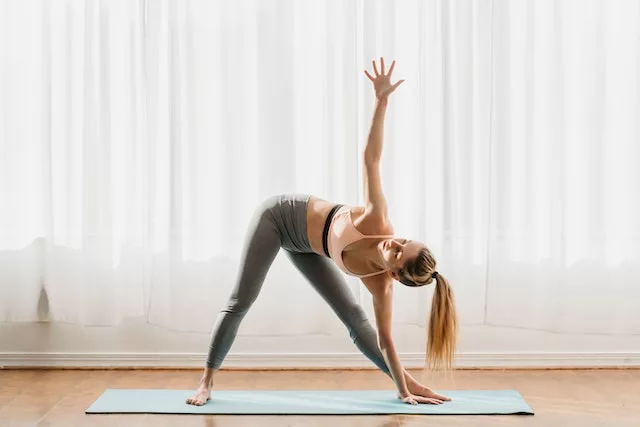
- Downward-Facing Dog Pose (Adho Mukha Svanasana)
Downward-facing dog is a popular pose that stretches the hamstrings, calves, and spine. Start on your hands and knees and lift your hips up towards the ceiling. Keep your hands shoulder-width apart and your feet hip-width apart. Press your heels towards the ground and gaze towards your toes.
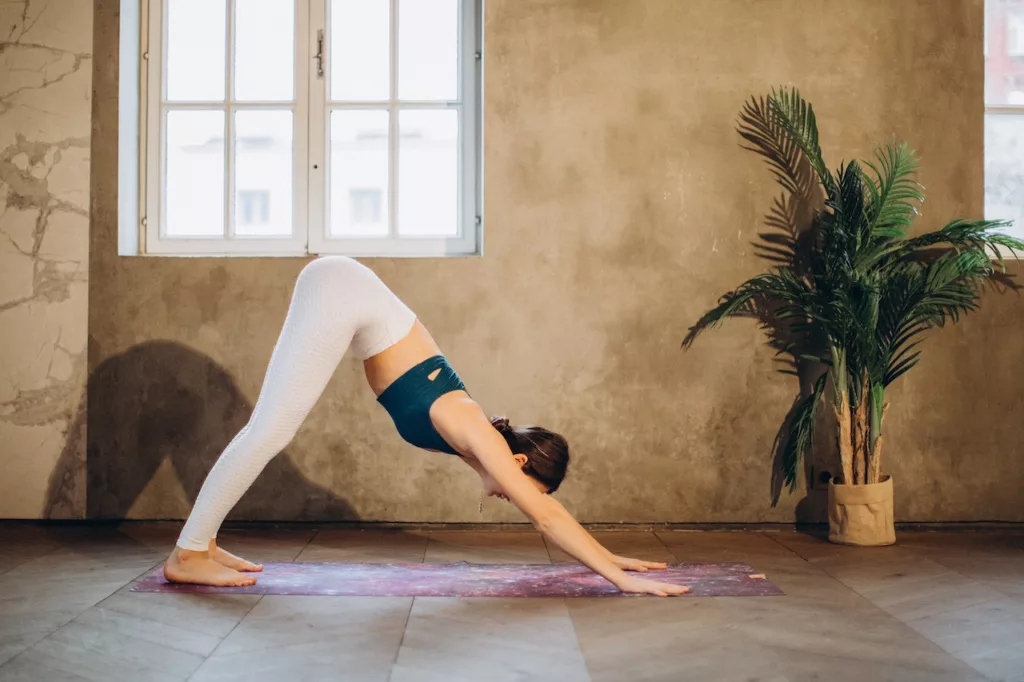
- Pigeon Pose (Eka Pada Rajakapotasana)
The pigeon pose is a deep hip opener that can help relieve tension and stiffness in the hips. From a downward-facing dog, bring your right knee towards your right wrist and your right ankle towards your left wrist. Extend your left leg behind you and rest your hands on the ground. Gaze forward or lower your forehead to the ground.
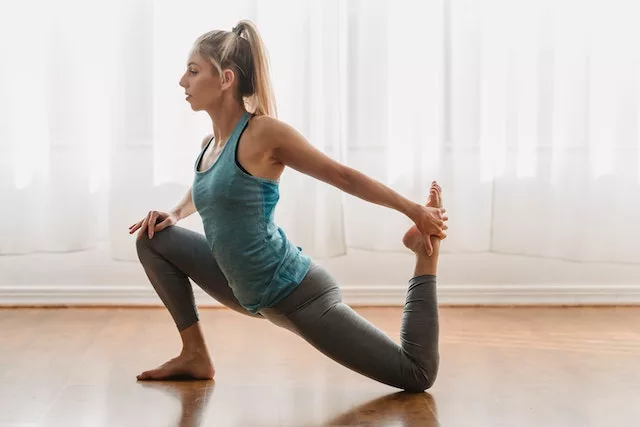
- Garland Pose (Malasana)
Garland pose is a squatting pose that strengthens the legs and stretches the hips and groin. From standing, bring your feet wider than hip-distance apart and turn your toes out slightly. Squat down until your hips are lower than your knees. Place your hands in the prayer position at your heart.
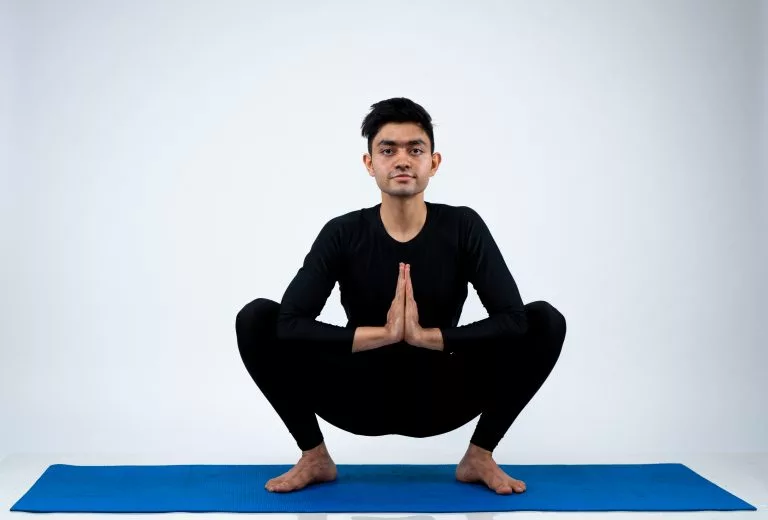
- Chair Pose (Utkatasana)
The chair pose is a challenging pose that strengthens the thighs and calves. From standing, bend your knees and sit back as if you’re sitting in a chair. Keep your spine long and your weight in your heels. Reach your arms up towards the ceiling and gaze forward.
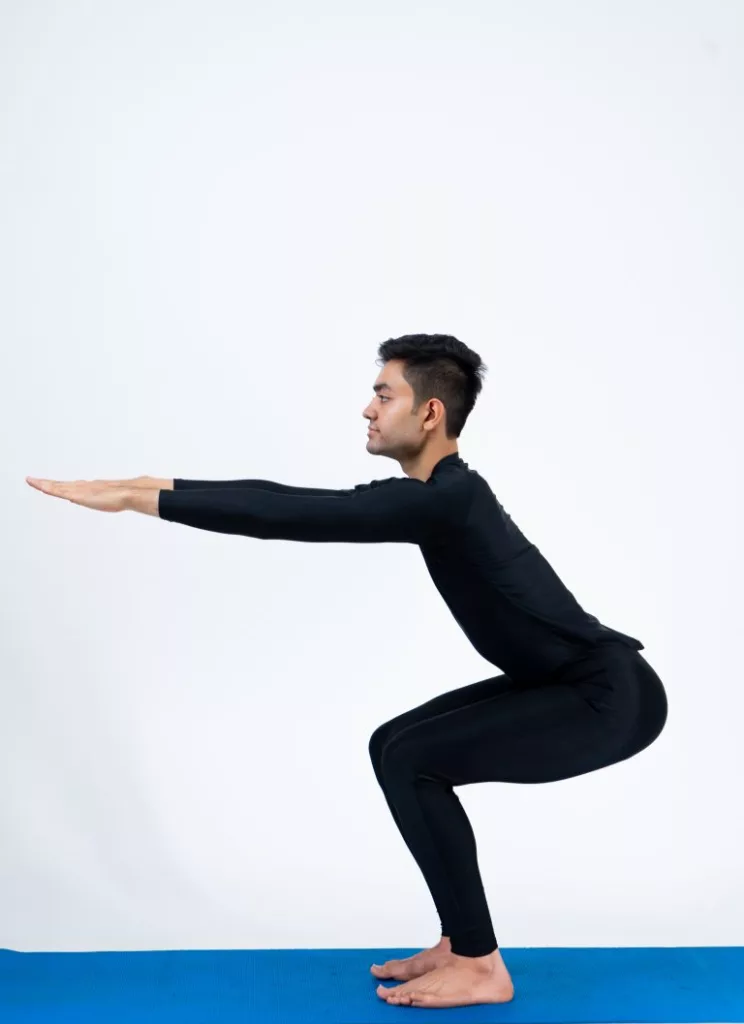
- Bridge Pose (Setu Bandha Sarvangasana)
The bridge pose is a gentle backbend that strengthens the legs, glutes, and lower back. Lie on your back with your knees bent and your feet hip-distance apart. Press your feet into the ground and lift your hips up towards the ceiling. Interlace your fingers underneath your back and press your arms down to lift your chest towards your chin.
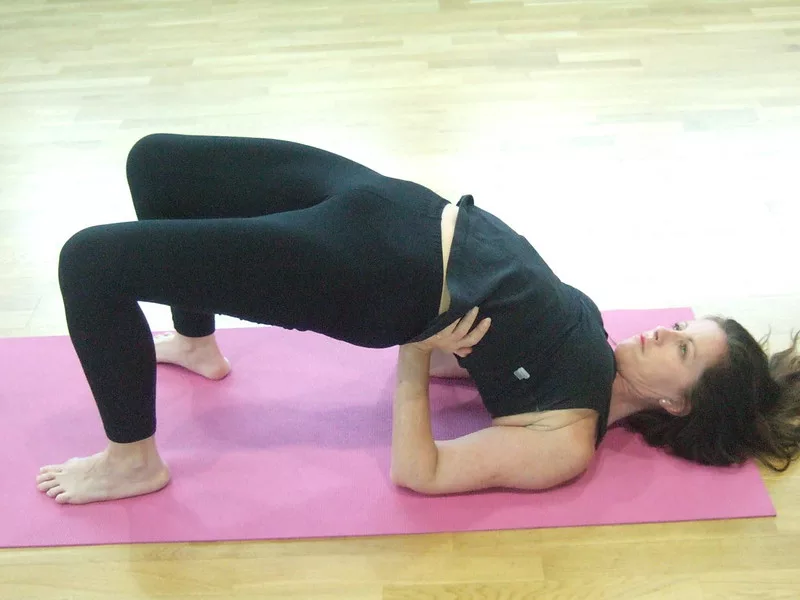
- Half Moon Pose (Ardha Chandrasana)
Half moon pose is a balancing pose that strengthens the legs and improves coordination. From warrior II, place your front hand on the ground or a block and lift your back leg parallel to the floor. Reach your top hand towards the ceiling and gaze up towards your hand.
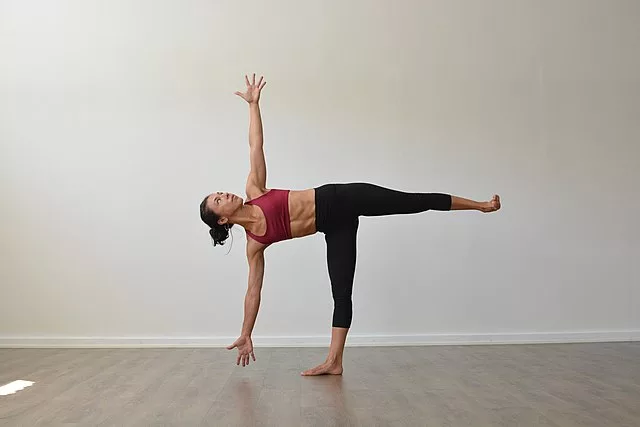
- Standing Forward Fold (Uttanasana)
Standing forward fold is a relaxing pose that stretches the hamstrings and calves. Stand with your feet hip-distance apart and fold forward from your hips. Let your head hang heavy and grab onto your elbows or the backs of your legs.
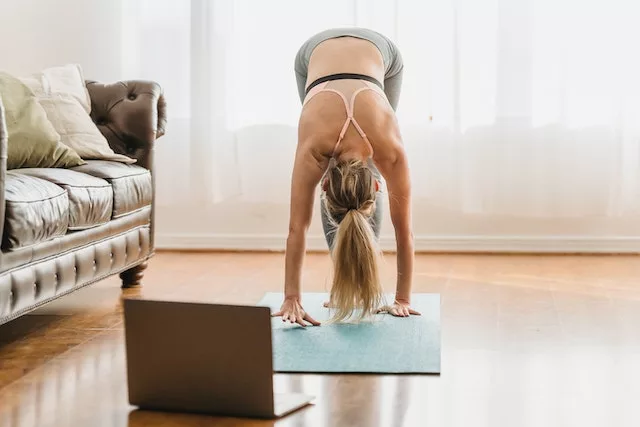
- Seated Forward Fold (Paschimottanasana)
The seated forward fold is a deep stretch for the hamstrings and spine. Sit on the ground with your legs extended in front of you. Reach forward and grab onto your shins, ankles, or feet. Keep your spine long and gaze towards your toes.
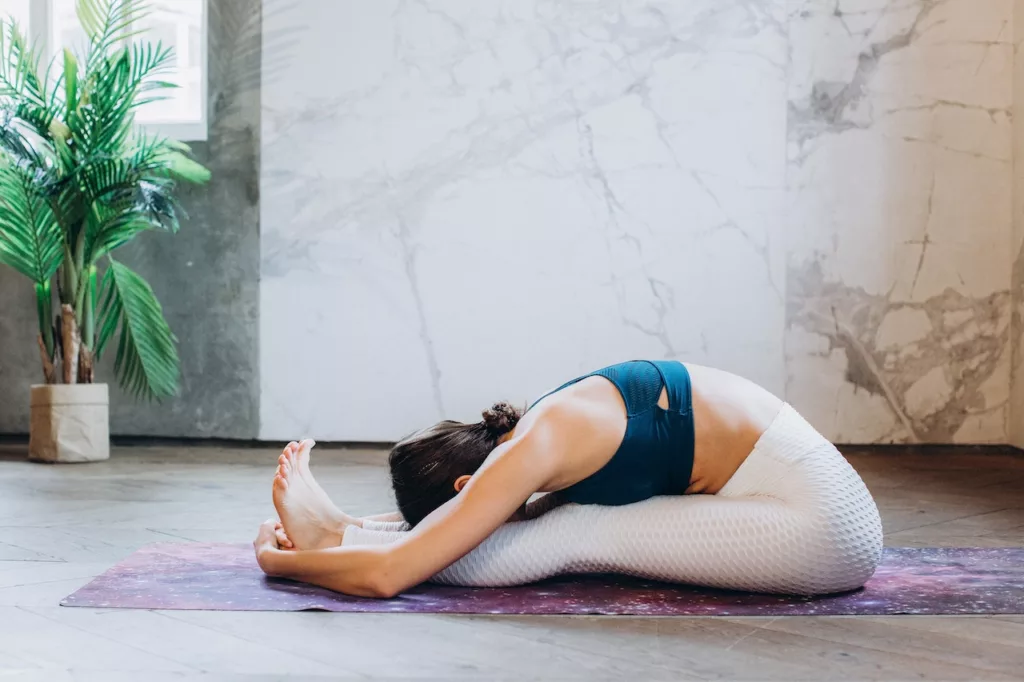
- Reclining Hand-to-Big-Toe Pose (Supta Padangusthasana)
The reclining hand-to-big-toe pose is a restorative pose that stretches the hamstrings and calves. Lie on your back with your legs extended. Lift your right leg up towards the ceiling and hold onto your big toe with your peace fingers. Keep your left leg extended and your back flat on the ground. Repeat on the other side.
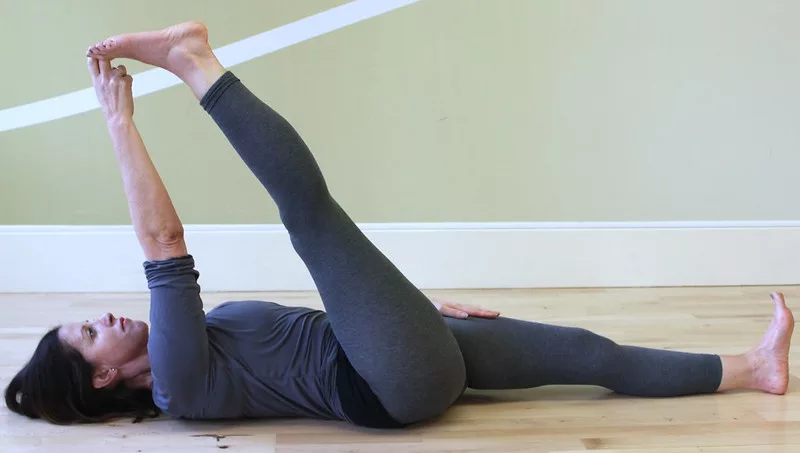
Conclusion
Yoga can be a great way to strengthen and stretch your legs while also reducing stress and improving overall health. Incorporate these poses into your practice and feel the benefits in your body and mind. Remember to always listen to your body and modify or skip poses as needed.
Related Article: Yoga for Arms: Strengthen and Tone Your Upper Body
Related Article: Yoga for Abs: Get Stronger and Leaner with This Online Program
FAQs
Can yoga help with leg pain?
Yoga can be a great way to alleviate leg pain and stiffness by stretching and strengthening the muscles in the legs.
Is it okay to practice yoga with an injury?
If you have a leg injury, it’s important to speak with your doctor before starting or continuing a yoga practice. You can also work with a yoga instructor to modify poses as needed.
How often should I practice yoga for leg health?
It’s recommended to practice yoga at least a few times a week to see the benefits for leg health.
Can yoga help with varicose veins?
Certain yoga poses, such as legs up the wall and supported bridge, can help improve circulation and reduce the appearance of varicose veins.
Do I need any special equipment to practice yoga for my legs?
All you need is a comfortable yoga mat and some comfortable clothing that allows you to move freely. You may also want to use props such as blocks or straps to modify poses.


